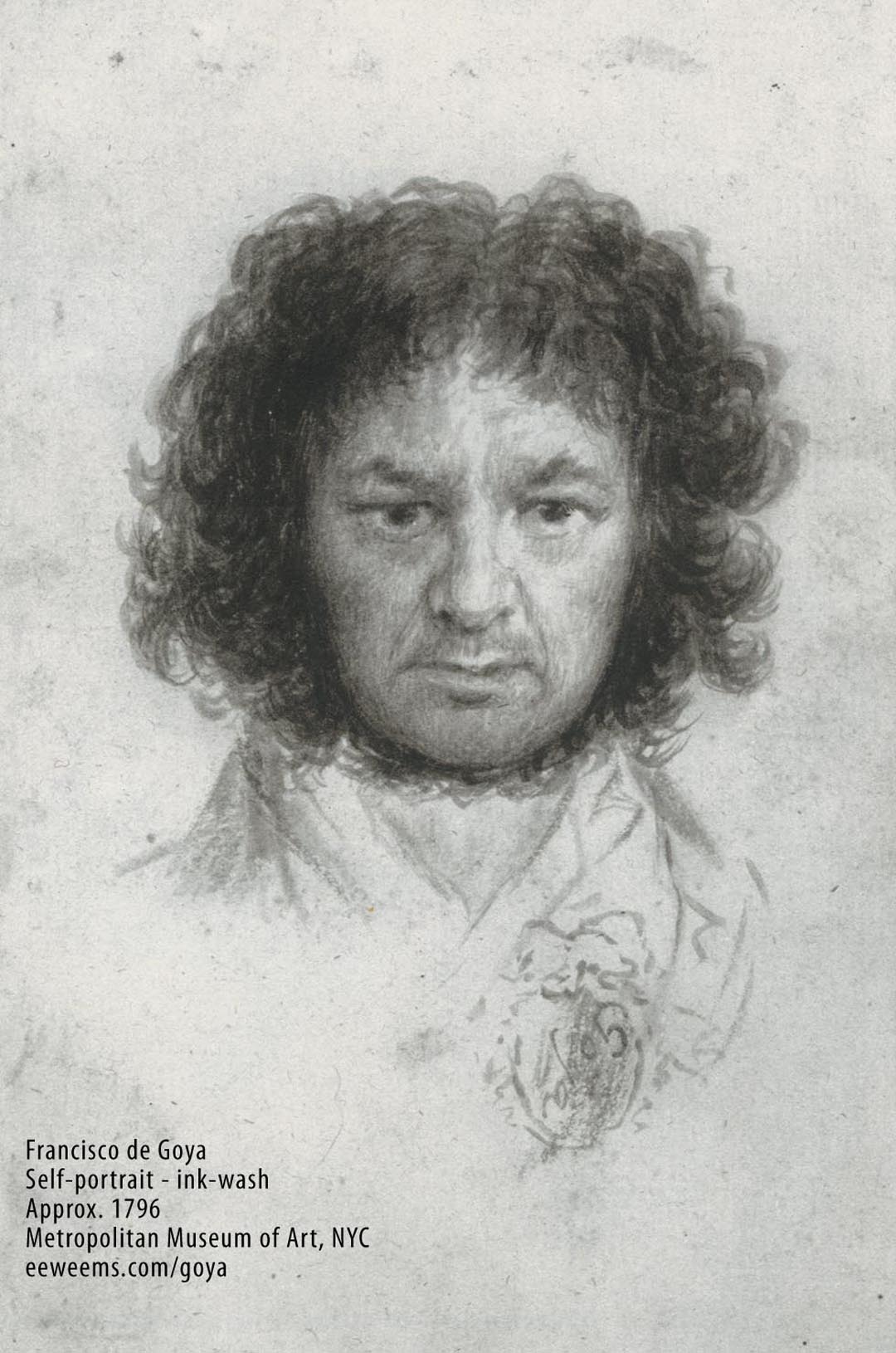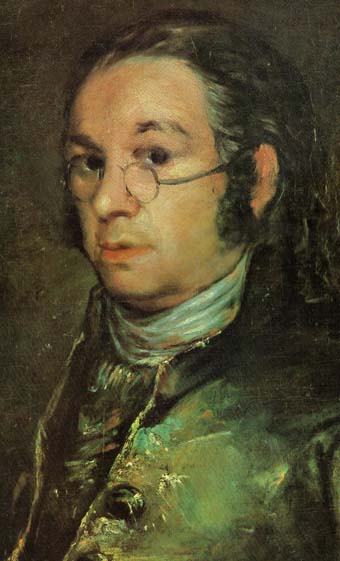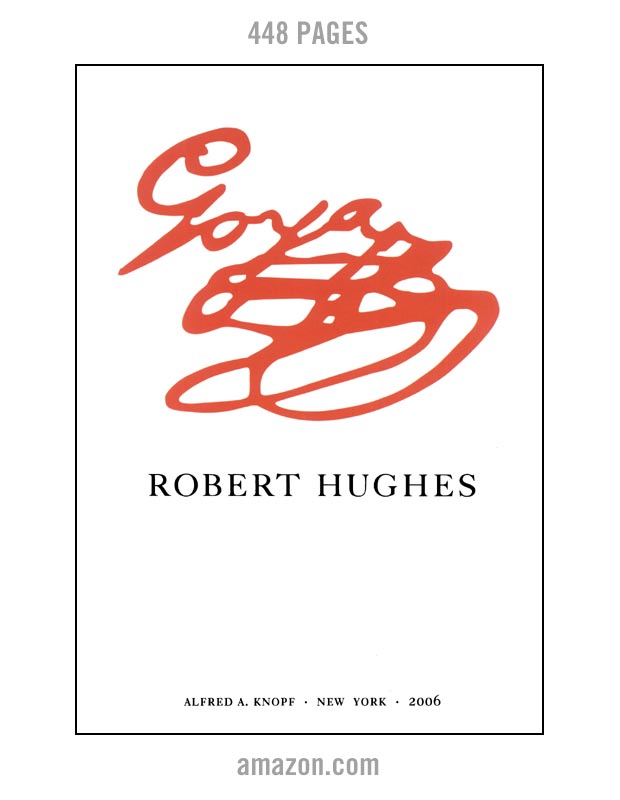An Introduction to Goya
Born March 30, 1746
Fuendetodos, Zaragoza Spain
Died April 15, 1828
Bordeaux, France
A Timeline of the life of Goya
The self portrait image above is a an ink-wash drawing Goya did at near the age of fifty. The original is in the Metropolitan Museum of Art in New York City.
During the time that Goya lived and painted, Spain – his birthplace – experienced repeated upheavals and periods of extreme violence. He lived through political dysfunction caused by shifting leadership, the revival of the Inquisition, the French military occupation of Spain, and the installation of Napoleon’s brother, Joseph Bonaparte, as king of Spain.
Afterward, when the oppressive Spanish king Ferdinand VII was reinstated as monarch, Goya was "officially rehabilitated" along with other Spanish notables. This situation, however, was soon overtaken by another revolution in 1820, when General Rafael Riego led an uprising against the king, resulting in the establishment of a new government and a liberal constitution. With foreign military backing, Ferdinand VII was restored to power by 1822.
Despite the fact he was named to the highest privileged position for an artist in Spain, "First Painter to the King," Goya, as did many others, left the country in a search for stability. Though he would return on trips to the Spain he had lived in for most of his eighty-some years, Goya died an exile in Bordeaux, France.
Goya has often been accused by some writers for an apparent misanthropy and general bitterness toward the world. They overlook that Goya's work repetitiously disdains cruelty, arrogance, and savagely attacks - - sometimes with satire, but often with blunt reportage - - the venal practices of the powerful people he knew. That Spain was in Goya's affections is not disputable; but that he harbored a loathing for the weaknesses and the proud cruelties, the moral chaos and the failure of intellectual ideals that added to the chaos, is discernible in the evolution of Goya's approach to presenting images, and chiefly in his choices of subject matter. He was, above all, an artist, and as a man, one who learned about the failures around him by experiencing them himself.
– Erik Weems
Additional written articles are here.
AMAZON
Goya The Terrible Sublime - Graphic Novel - (Spanish Edition) - Amazon
"From this headlong seizure of life we should not expect a calm and refined art, nor a reflective one. Yet Goya was more than a Nietzschean egoist riding roughshod over the world to assert his supermanhood. He was receptive to all shades of feeling, and it was his extreme sensitivity as well as his muscular temerity that actuated his assaults on the outrageous society of Spain." From Thomas Craven's essay on Goya from MEN OF ART (1931).
"...Loneliness has its limits, for Goya was not a prophet but a painter. If he had not been a painter his attitude to life would have found expression only in preaching or suicide." From Andre Malroux's essay in SATURN: AN ESSAY ON GOYA (1957).
"Goya is always a great artist, often a frightening one...light and shade play upon atrocious horrors." From Charles Baudelaire's essay on Goya from CURIOSITES ESTRANGERS (1842).
"[An] extraordinary mingling of hatred and compassion, despair and sardonic humour, realism and fantasy." From the foreword by Aldous Huxley to THE COMPLETE ETCHINGS OF GOYA (1962).
"His analysis in paint, chalk and ink of mass disaster and human frailty pointed to someone obsessed with the chaos of existence..." From the book on Goya by Sarah Symmons (1998).
"I cannot forgive you for admiring Goya...I find nothing in the least pleasing about his paintings or his etchings..." From a letter to (spanish) Duchess Colonna from the French writer Prosper Merimee (1869).
GOYA : Los Caprichos - Dover Edition - Amazon
GOYA NEWS ARCHIVE
Original Page June 1997 | Updated July 26, 2024






